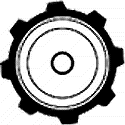

Standard Forms is one of the largest manufacturers and distributors of standard and custom-printed business forms in the United States. The company maintains warehouse operations across the United States and has more than 20,000 active customers.
The company sought a cost-effective and manageable way to deploy legacy order-entry and product-catalog applications to employees and remote customers over low-bandwidth dial-up and Internet connections. WinFrame has enabled Standard Forms to deploy its CD-ROM–based order-entry and product-catalog applications to customers over the Internet. The immediate availability of up-to-date product-catalog information and the option of ordering on line have improved the speed with which orders are processed and shipped, which has helped Standard Forms gain a competitive advantage.
Presenting problem All of Standard Forms’ business applications, including its order-entry program, were developed in legacy RPG code to run on an IBM AS/400 system. To access these applications, employees needed to run Reflection, a 5250 terminal-emulation software package made by WRQ, Inc., on their PCs. The company faced the challenge of finding a cost-effective, easy-to-manage way of deploying the Reflection software so that employees and customers could access its order-entry and other legacy applications over low-bandwidth dial-up and Internet connections.
The challenge: Find a cost-effective, easily managed way of deploying mainframe terminal-emulation software.
The terminal-emulation package needed to be installed at each remote location. Users were required to build specialized overlay settings to define the files required for the Reflection session. The user intervention normally required several hours of technical support for a step-by-step setup of a host file for the Reflection 5250 emulation. As a result, installation took several months and hundreds of hours.
Standard Forms also looked into deploying the legacy applications to users through a distributed client/server system. To Standard Forms, however, this proposition was an overwhelming prospect because the company had not yet moved to an intelligent client model. Five gigabytes of business applications requiring four years of work would need to be rewritten for a distributed client/server system, and therefore this approach was not considered an option.
Standard Forms also considered extending the network’s arm to the remote users’ sites. This step would have entailed placing a 5250 terminal at each site and running an SNA protocol through a dedicated 9600-baud or higher link 24 hours a day. At 9600 baud, Standard Forms would have had to absorb the monthly expense of a dedicated line for each remote site, the 5250 terminals, a router, and a “pearl box,” which converts lower-level IBM protocols to a higher-level IBM protocol. This initial setup expense could have run up to $16,000 per site, which was a costly and unacceptable option for Standard Forms.
Hardware and software The Standard Forms thin-client/server networking environment includes:
Standard Forms deploys legacy mainframe applications for order entry.
Standard Forms is using WinFrame to deploy mission-critical legacy applications for order entry and product catalogs to 125 employees and over 15 remote customers.
Solution and results In the days before WinFrame, Standard Forms took 24 hours to process customer orders through its electronic data interchange. With the new thin-client/server system maintaining the company’s distribution system, customers can look at inventory in real time. Items are now allocated from inventory the instant a customer places an order. Within one minute of a customer printing a copy of the shipping document, the original is printing in the warehouse.
Standard Forms currently has 125 internal users and about 15 remote customers accessing its WinFrame application servers. The remote users access WinFrame through a TCP/IP connection via a network card or through a dial-up Point-to-Point Protocol (PPP) account.
Using this thin-client/server solution, Standard Forms’ customers and prospective customers can browse the company’s CD-ROM–based product catalogs over the Internet. The company’s proprietary CD-ROM catalog resides and executes on the WinFrame server, and only the graphical user interface displays on client PCs.
Prospective customers can now browse CD-ROM–based catalogs.
Once customers know which products they want to order, they can check inventory availability as well as their own billing and account information on line by launching Reflection from the WinFrame application server. WinFrame acts as a gateway to the company’s AS/400 system, on which the order-entry and inventory-control applications reside.
The thin-client/server solution using WinFrame allows Standard Forms to quickly, easily, and cost-effectively deploy its mission-critical legacy applications to remote users by issuing a single setup disk that contains the WinFrame thin-client software and a special customized script with all the settings already built into the installation cell. Users only need to install the WinFrame client software and create an icon on their desktops. Standard Forms builds one Reflection session file on the WinFrame server, which multiple concurrent users can then access.
When the customer double-clicks the WinFrame icon, a WinFrame session is started and the customer is given a predefined application profile. The customer can then log on to an AS/400 session and access the CD-ROM–based product catalog and order-entry applications.
Standard Forms is exploring other enterprise application deployment possibilities. One such use the company is considering is to extend the reach of its product catalogs and order-entry applications to the Web through WinFrame’s ALE. This capability allows existing applications to be embedded in or linked to HTML Web pages and viewed from a Web browser. Standard Forms can offer its product catalog this way. Customers will not only be able to look up product information but can also place orders directly from the catalog.
Standard Forms is currently expanding its applications to World Wide Web implementations.